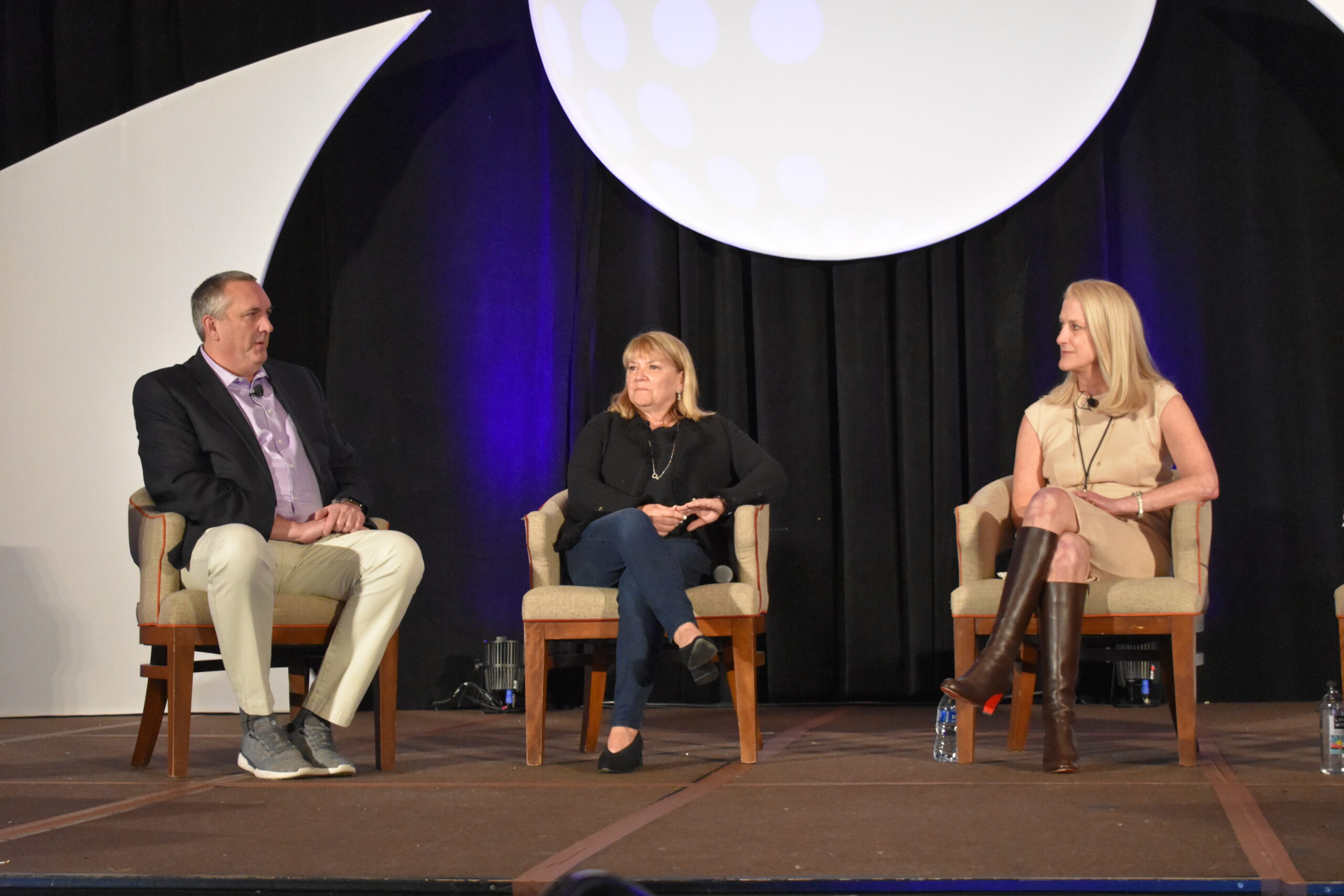Nancy Lane, CEO of Local Media Association, speaks during the Pulse of the Media Industry session at the 8th Mather Media Revenue Symposium. The panel also included Mike Reed, CEO of Gannett, and Katy Murray, president of The Dallas Morning News.
3 takeaways from the Mather Media Revenue Symposium 2023
Technology. Paywalls. Data. Philanthropy. These are just a few of the topics media industry professionals discussed and debated last week at the 8th Mather Media Revenue Symposium 2023 in Atlanta. The event spanned three days and included several distinguished experts who shared their insights on strategies for increasing digital subscription revenue.
Here are three key points that local news organizations can learn from the symposium.
1. Getting the right tech stack isn’t easy
“We never met a publisher who’s ecstatic about their tech stack,” Matt Lindsay, president and founder of Mather Economics, shared during the session titled “Our Firm’s Vision for 2023 and Beyond.”
Technology was a key element of discussion throughout the sessions. Unfortunately, no one had all the answers.
Katy Murray, president and chief financial officer of The Dallas Morning News, agreed with the sentiment, saying the issue is that reader revenue technology is changing so quickly that it is hard to keep up.
Seth Harris, CNBC’s vice president of direct-to-consumer strategy and operations, offered an important tip for success: Before investing significant resources into technology, start small with strategic experiments and invest further when those experiments are successful.
2. Remember to measure what matters
It’s easy to get caught up in measuring everything that can be tracked, and drown in a sea of data. But amid all this tracking and measuring, it’s important not to lose sight of what matters.
“Of all the metrics we’ve looked at, the single most important metric for digital is building habit,” said Tim Franklin, senior associate dean of Northwestern University-Medill, during a session on data trends. “We’ve seen this across the board, with big markets and small markets.”
Franklin said that is a significant pivot from the days when he ran newsrooms; then, he paid more attention to “empty calorie page views and drive-by users.”
Will Hauck, McClatchy’s senior vice president consumer revenue and strategy, agreed and added that he also largely ignores open rates because of Apple’s measurement changes.
Page views, time spent, and open rates were discarded as “empty calorie” metrics. But Mark Walker of Aptitude Software highly recommended tracking engagement data to segment users and create tailored strategies.
3. Diversified revenue models are critical for smaller media companies
While subscription revenue was a leading topic, many sessions dived into additional revenue models, including philanthropy, branded content, e-sports and third-party services.
Given that local and regional publishers’ addressable market is so much smaller than The New York Times and Netflix, subscription revenue may not be the best option.
Nancy Lane, CEO of Local Media Association, said, “Smaller orgs need to decide if they are in the digital subscription business or not.” Lane said many smaller media outlets are seeing more success in asking people to donate and support their work.
Additionally, she pointed out that branded content advertising and philanthropy are growing options for small companies.
“We’re seeing the revenue pie charts getting to 10, 15, 20 percent for journalism funded by philanthropy for smaller news organizations,” Lane said. She shared examples from large to small, including recent funding for Gannett’s Indianapolis Star for education reporting. Gannett CEO Mike Reed acknowledged the opportunity as did Murray, who confirmed that The Dallas Morning News also has an education reporter funded entirely by philanthropy.
Final thoughts
Despite recent layoffs in response to further declines in advertising revenue, the mood was optimistic.
Print subscriptions continue to pay the bills as digital subscriptions grow. No one thinks print is going completely away anytime soon. It has become more expensive to deliver. Some are moving away from carrier delivery in favor of USPS mail.
It’s clear news organizations are committed to adapting, thriving and collaborating as they diversify revenue and meet the information needs of their communities.


